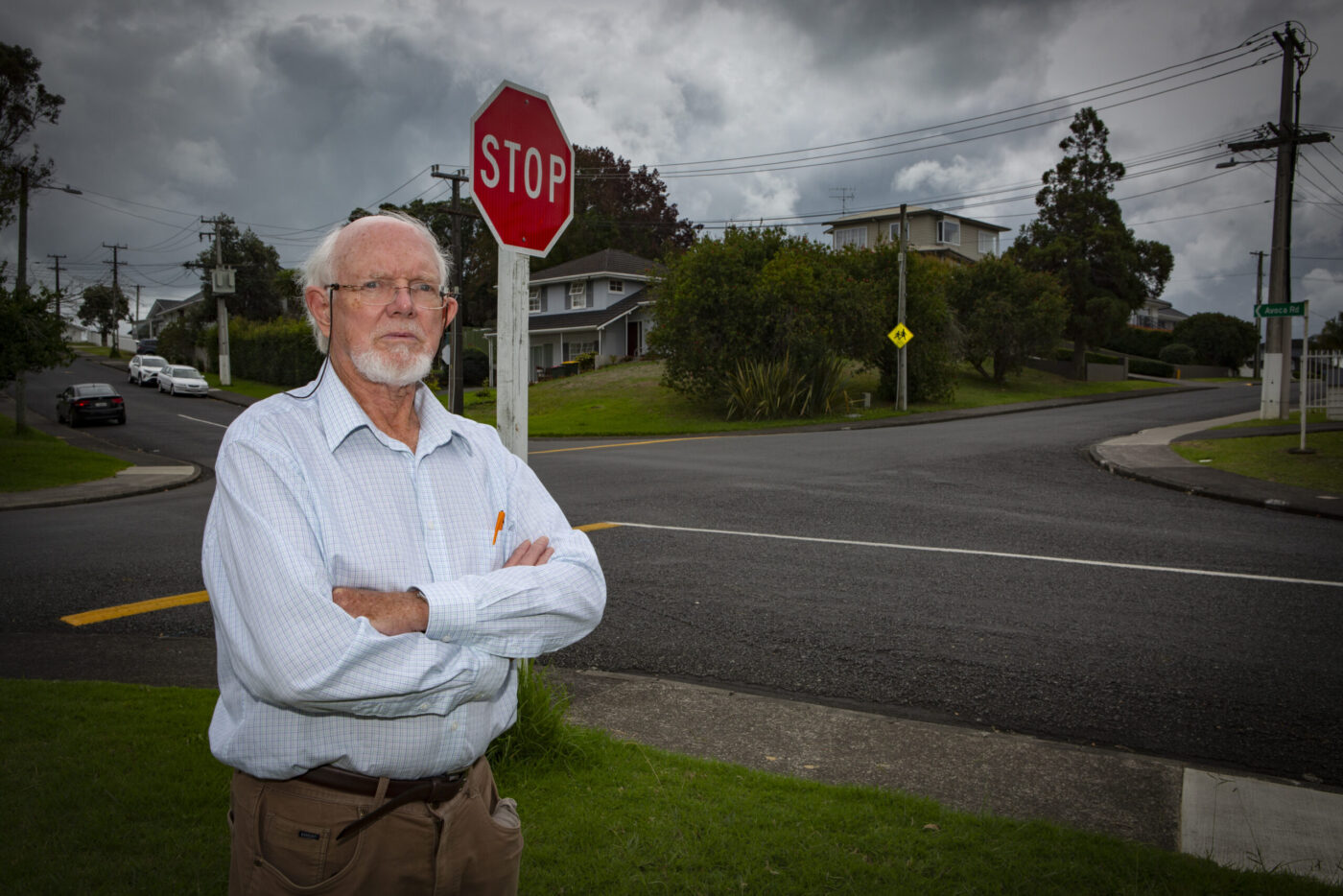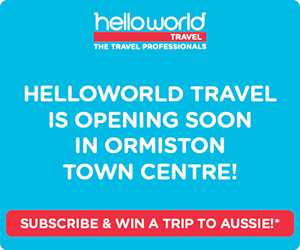
PJ TAYLOR talks with a friendly civic-minded man who uses his skills, knowledge and experience for the betterment of his east Auckland communities.
Where were you born and grew up?
I was born in London – Acton, in the west, during World War II years, and attended a local grammar school. My first full-time employment was with P&O Group. I was promoted into what was in those days termed “management services” – a small group focussed on improving productivity through improved systems and organisation design. During this time, I gained a professional qualification in transport and an honours degree in economics. The culmination of my time there was working on a McKinsey-designed group restructuring, establishing 10 operating and servicing companies from the literally hundreds of companies and subsidiaries that existed within the P&O Group.
Why did you come to New Zealand and when?
There was not likely to be as big a challenge as a major group restructuring, so I cashed in my pension and headed west. I sailed from Gibraltar to Barbados in a 42-foot keeler and explored many Caribbean islands. I then flew to the United States, touring there and Canada on Greyhound buses before heading into Mexico, eventually arriving in New Zealand in 1972. This was not necessarily my final destination. Rather somewhere to visit as part of a longer trip. By the time I got here I was down to about $16, but rich in memories and experiences. I also needed more funds! I quickly fell in love with the country – its beauty, tramping, sailing opportunities, and how egalitarian (equal) it was. Quite a contrast to the class structure of English society.
What did you do for work in New Zealand?
I got a job with what was then NZ Government Railways, redesigning and implementing an improved personnel system, considerably reducing workloads. From there I moved on to become management services manager for what was then Auckland City Council, supervising a small team responsible for all aspects of productivity and staffing levels within council. I like to say I’ve worked on everything from A to Z – the abattoir and art gallery through to the zoo. Our little department was expected to pay for itself through productivity improvements. It did. I moved on from council into the private sector, still working in areas of performance management and productivity. Then an opportunity arose for self-employed consulting in developing economies. For more than 25 years I was involved with projects in some 30 countries ranging from Guinea-Bissau in the west to Fiji in the east. Technically, the most eastern country would be Kiribati, but I didn’t get to Kiritimati at the extreme eastern end of the island chain. Very broadly speaking this work was about assisting governments with development and implementation of policies and public sector reform strategies including performance improvement in ministries and enterprises right through to the development of poverty reduction strategies.
Why did you decide to put down roots in east Auckland?
Moving into east Auckland was really “supply driven”. A subdivision was being developed outside Howick. We liked the show home, found another under construction close by, and lived there for some 30 years. Then, with family off our hands we illogically moved to a larger house. We really like Howick – the village atmosphere, beaches, sailing opportunities and plenty of good walks available.
Tell us about the community activities you’re involved in.
After moving away from paid employment, I had time to look at local community involvement. I attend Eastview Baptist Church. I’m heavily involved with Cockle Bay Residents and Ratepayers Association, firstly at the time Auckland local government was restructured into the so-called super-city. Initial personal interests were “big picture” – whether ratepayers and citizens were getting value for money from the rates they’re required to pay. I had some useful but ultimately fruitless discussions with the late Dick Quax, then a councillor, on opportunities for very significant, targeted cost reductions. The association then decided it wished to have a more local focus, so this is where our time goes. Two particular projects deserve attention. The first is the proposed construction of some 70 apartments on land in Sandspit Road zoned for only nine houses. This has been ongoing now for seven to eight years. Local opposition resulted in the first application being refused. A second application made directly to the Environment Court was withdrawn by the developer. A third application made under Fast Track legislation was also declined. The developer has now lost an appeal in the High Court. Another recent case involves an application to subdivide a property in Pah Road into three sections, all of which are less than the minimum size specified in the Auckland Unitary Plan. The proposal would also damage the roots of two kauri trees on the property. This consent application has also been refused but appealed to the Environment Court. It’s still under consideration. An important point with both these cases is if the Unitary Plan rules were followed precisely then non-compliant applications would be rejected at the outset, creating major cost savings for ratepayers. Equally important to these examples, the association has sponsored work restoring the walkways at Cockle Bay Beach. We’re also involved in multiple other less high-profile enquiries from residents.
Why do you get involved in community volunteering?
I believe local citizens sometimes require spokespeople to act on behalf of the community by making representations and being advocates. The goal is to ensure the local community retains the intrinsic local values that make Cockle Bay and Howick a great place to live. We do not want sewage holding tanks sitting on the Sandspit Road ridge line in order to permit the development of a large block of apartments that detract from the overall character of the area.

What do the Mangemangeroa Reserves mean to you?
I joined Friends of Mangemangeroa some years ago when realising I was making good use of their tracks and enjoying them but contributing nothing towards their future. One of my contributions so far has been to help raise their profile a little. I remain hugely impressed by the group of volunteers led by Betty Harris, Forest and Bird and others, who, over 30 years ago, had the vision of saving the old Somerville Farm from development and instead linking it to a series of individual reserves that now enable people to walk from Cockle Bay Beach to Hayley Lane through diverse regenerating native bush. The early intention was this would extend to Point View Reserve, thus giving access to additional walking tracks and recreation. It’s therefore encouraging that the Friends were able to sit down recently with council staff to talk about revitalising a long-term vision for the reserves, but then “drilling down” to develop time-bound, costed annual implementation plans that ensures that things actually happen. Within this framework we were able to talk about the need to “future proof” the reserves against climate change impacts (“climate adaptation” in the jargon) as well as highlighting other work that needs to be done. I pay tribute to the hard work put in by Sally Barclay and her team of weeders and helpers who are out every week keeping weed growth under control. I wonder, also, how many residents realise how much work goes into organising. Not just the community planting days but also the school planting and awareness trips that help foster an environmental awareness amongst future custodians of this resource. I wonder, also, whether people appreciate that many of the 120,000 seedlings that have been planted are raised from seeds collected from plants on the reserves. These are hand collected and nurtured by volunteers, watered daily, and ultimately planted out by yet more volunteers – all at little or no cost to council except contributions to the cost of things like potting mix and plant protectors.
If there was one thing in New Zealand society you’d like changed, what would it be?
I referred earlier to first arriving to a very egalitarian society. I think there has been a shift of emphasis within New Zealand to putting the dollar, not people, first. I support the emphasis on the private sector as the engine of growth but feel that government must also support those who are not in the same position to share in the wealth generated from economic growth. That does not mean people should be free-loaders and not contribute to their own well-being. It does mean we need to identify some of the “nice-to-haves” that could be paid for by user-pays and divert funds to providing a “hand-up”, not a “hand-out”, to the less fortunate, be it in health, education, housing, or the cost of living. We need to lower some expectations about entitlements and think about values and the well-being of society as a whole.








